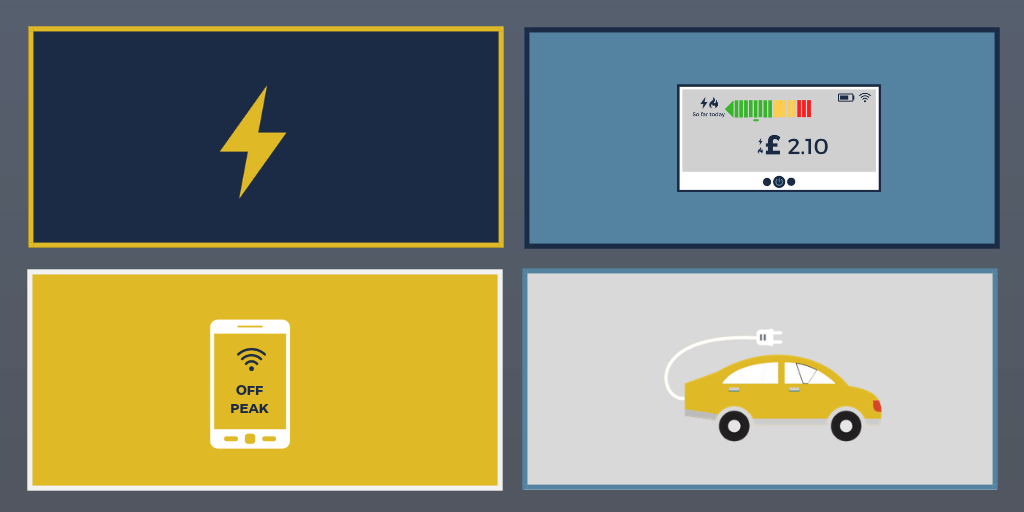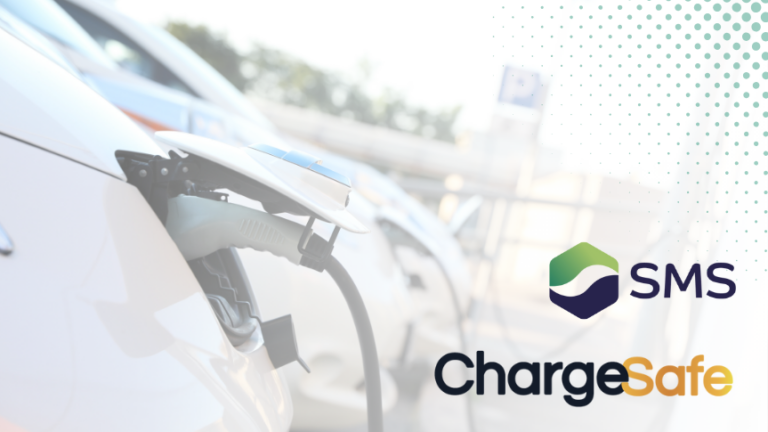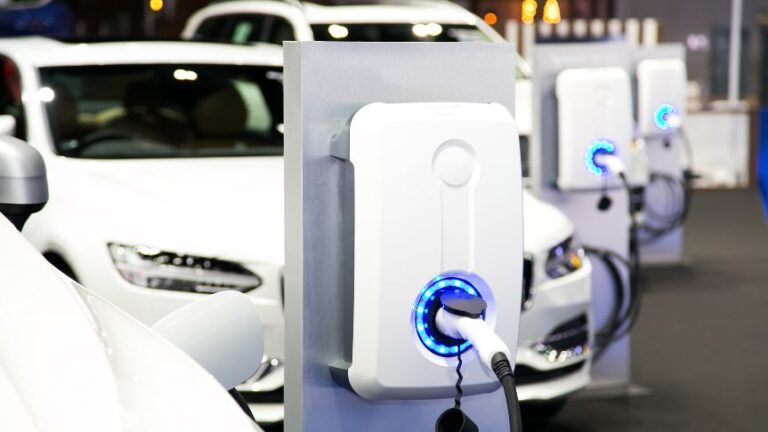Four energy trends to watch in 2019

After a year in which improvements to the smart energy system saw UK electricity generation fall to its lowest level for a quarter of a century (whilst simultaneously output from renewables hit a record high), Britain’s move towards a low-carbon future continues to gain momentum.
The fall in electricity generation comes even though the country experienced continued increases to population and GDP during 2018, demonstrating a “decoupling” of energy production and economic growth. This very significant development – a clear product of the UK’s ongoing low-carbon transition – can be attributed to several factors, including better energy efficiency regulations, more environmentally and energy conscious consumers, the proliferation of renewables, and – increasingly – the electrification of transport.
These individual trends have collectively had a hugely disruptive effect on the energy sector in the past few years, and 2019 promises to be no different as the UK’s low-carbon impetus builds.
Below we look at four trends that have the potential to play a big part in our changing relationship with energy over the next 12 months.
Smart meter interoperability and data availability
Smart meters are the cornerstone of our smart energy system, so with energy suppliers this year set to ramp up installation of SMETS2 meters (second-generation devices that boast broader interoperability) supported by software and hardware developments that unlock the capability to install in more premises, 2019 is set to provide a major step forward for the national smart meter communications network. Equally significantly, already-installed SMETS1 meters are also set to undergo an upgrade, ensuring all devices are adopted, enrolled and interoperable with the Data Communications Company (DCC) network, a process that will see any meters that have temporarily lost smart functionality regain full capabilities.
These developments are important on two fronts: firstly, because a growing number of people will be able to enjoy the energy-saving benefits of smart meters, and secondly, with millions of more meters expected to join the network, energy suppliers and network operators will have masses of extra consumption data at their disposal. This will be used on one hand to improve energy services to consumers – for instance through the development of smart time-of-use tariffs (more on these below), and the extension of half-hourly settlement to domestic customers. On the other hand, operators will be able to use this extra data to get a more accurate picture of supply and demand, allowing them to integrate intermittent renewable energy sources to the grid more effectively.
Learn more about the smart grid, or discover how we are making British homes smarter.
Demand-side response and the rise of the ‘prosumer’
Demand-side response (DSR), the scheme where customers are incentivised financially to lower or shift their electricity use at peak times, has been around for some time. However, until fairly recently it has only really been utilised by industrial and commercial (I&C) consumers, enabling them to save – and monetise – their energy use. Now though, with the technology and framework surrounding DSR having improved and the scheme developing a new level of automation, 2019 is likely to be the year where DSR sees a rapid expansion as viability and incentivisation spreads to smaller organisations.
Greater participation in DSR has the potential to be transformative, not just for businesses that will have an extra method to boost efficiency, cut carbon emissions, and provide extra revenue, but for the energy complex as a whole. The more participants there are, the greater the efficacy of DSR towards ensuring a more secure, sustainable and affordable electricity system, with operators better enabled to soften peaks in demand and fill in the troughs, especially at times when power is more abundant, affordable and clean.
We can help your business integrate DSR into a forward-looking energy strategy. Find out more.
It’s not just businesses that will benefit from DSR in 2019, a growing number of domestic consumers are expected to engage more actively in the energy system too. Just by having a smart meter, consumers can be incentivised to increase, decrease or shift their electricity consumption, with smart time-of-use (ToU) tariffs that price energy according to the time of day. This can help consumers reduce peak demand, save money, or indeed even be paid for their energy use when demand is low. Several energy suppliers launched smart ToU tariffs aimed at domestic consumers in 2018, and with Octopus Energy having clearly demonstrated the benefits of the new model in a recent landmark study, this year should see even more suppliers follow suit as consumer awareness and engagement proliferates.
Alongside smart ToU tariffs, the boosted interoperability of smart meters (as discussed above) is additionally unlocking new ways for connected household devices to engage in the energy system. Consumers are increasingly purchasing more smart appliances for the home, and these devices, such as washing machines and dishwashers, can connect to the smart metering system to access pricing and consumption data, meaning activity can be programmed to automatically take advantage of the cheaper time-of-use rates that are now on offer.
Energy management and compliance
The greater convergence and availability of consumption data is having a profound effect on our relationship with energy. While the benefits of a more intelligent energy system are universal, for large energy consumers (i.e. organisations) the potential advantages of the smart energy revolution are multiplied. Energy consumption, after all, is inextricably linked with profitability. This explains the huge rise in demand for energy efficiency and data services (like ours) in recent years as companies call for improved insight into their energy use. In 2019, such demand is expected to develop further still as an increasing amount of businesses consider their sustainability (both from an environmental and financial perspective), while simultaneously facing the heightened pressures of rising energy costs and brand-new compliance regulations.
Indeed, this year environmental compliance is likely to be high on the agendas of UK businesses, as a number of mandatory schemes come into force or reach deadline. There will be a rush of companies seeking best practice in line with the 5th December deadline for Phase 2 of Energy Savings Opportunity Scheme (ESOS), while in April, the new Streamlined Energy and Carbon Reporting (SECR) regulations are enforced, effectively replacing the Carbon Reduction Commitment (CRC) programme. This will affect around 12,000 companies in the UK, 8,000 more than were required to comply with the CRC. Consequently, the I&C sector, the conventional clients of energy services, will find themselves joined by a variety of other industries as new standards are set for reporting, management and business energy efficiency.
Electric vehicles and charging infrastructure
Amid improving technology and accelerating climate change, the UK government published its Road to Zero Strategy last year, which expects one third of vehicles on British roads (roughly 10 million) to be electric by 2030. The announcement of this ambitious strategy followed the government’s decision in 2017 to end sales of combustion engine cars and vans by 2040.
Over the next decade, the prospect of 10 million electric vehicles added to the UK fleet will pose significant challenges in terms of demand put on the grid, and demand for public charging infrastructure – particularly for owners with street parking and those travelling long distances away from home. The National Grid forecasts that EVs will create an additional 18GW of demand by 2050, which is one-third higher than today’s peak demand. As it is unclear whether the scale of generation needed for this scenario can be met, a combination of better consumer engagement, smart-charging technology, and other innovative vehicle-to-grid (V2G) solutions at scale are likely provide a more realistic solution in making sure that the UK’s energy system can cope.
The ‘chicken and egg’ question is one that is often asked in relation to the uptake of EVs and the establishment of charging infrastructure (which one comes first?). What seems abundantly more clear-cut is this: if we are to avoid the potential grid-related headaches alluded to above, then smart charging and V2G technology must be in place before they are required.
Mindful of this, the UK government passed the Automated and Electric Vehicles Act in July 2018, including a regulation to ensure all chargepoints sold or installed are smart, and that all public chargepoints are compatible with all models of EV. The government additionally now has powers to ensure that motorway services are upgraded with charging facilities, while city and regional authorities will also be able to request installations at large fuel retailers in their areas. Several high-profile forecourt operators have already taken steps to meet these requirements (or plan to over the next 12 months).
Bearing this in mind, with the affordability and battery-life of EVs continually improving, the growing availability of smart meter-enabled tariffs that reward consumers to charge their cars during off-peak times, and a range of other incentives on offer to UK business that support the growth of charging stations and EV adoption, 2019 could be the year that the EV revolution finally takes off in earnest.
We are supporting the UK market to establish a national network of EV charging infrastructure. Find out more



